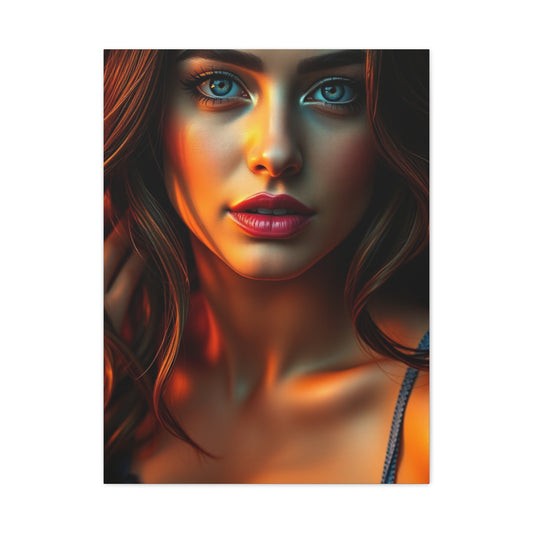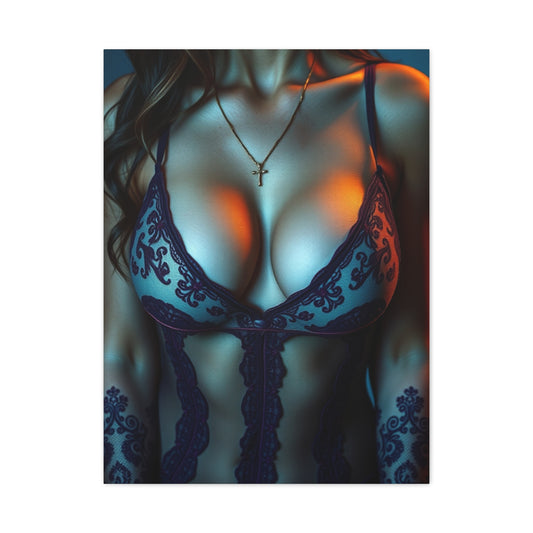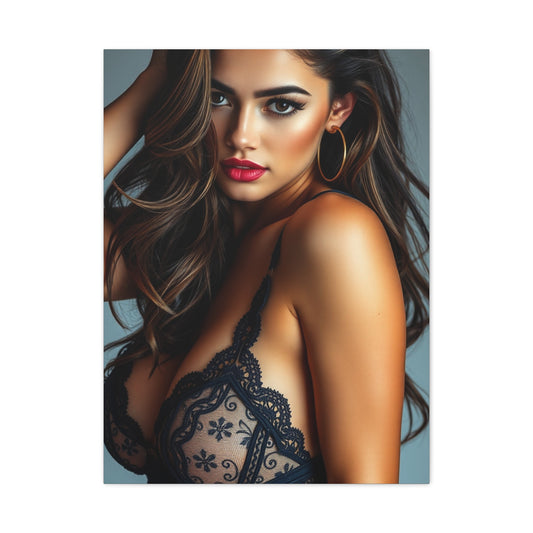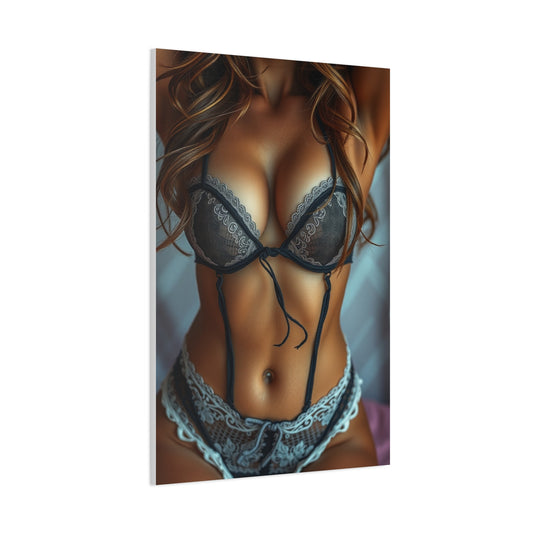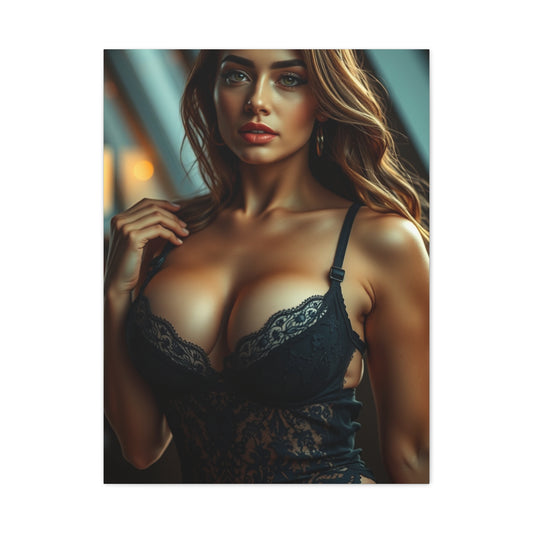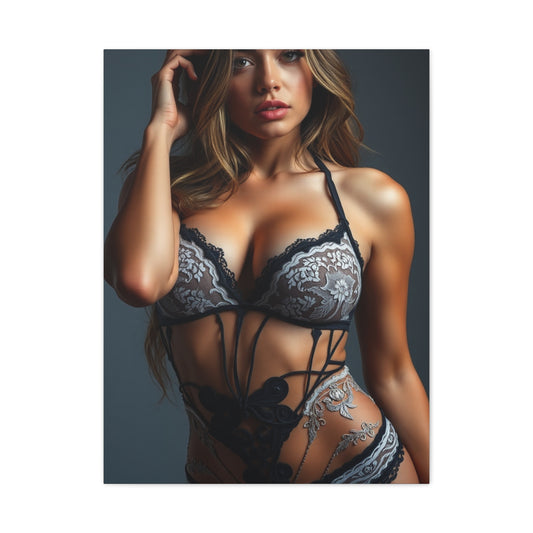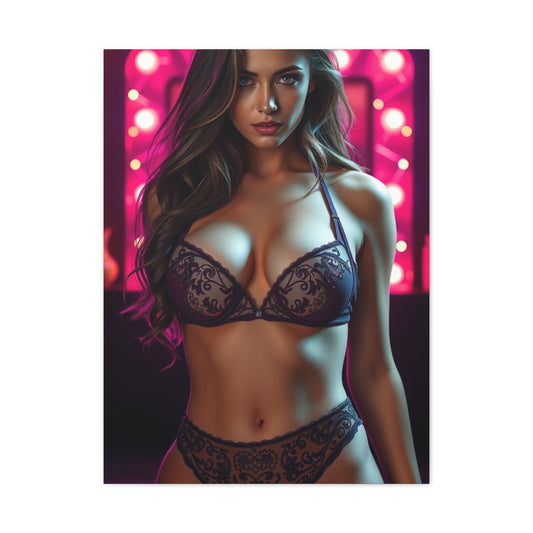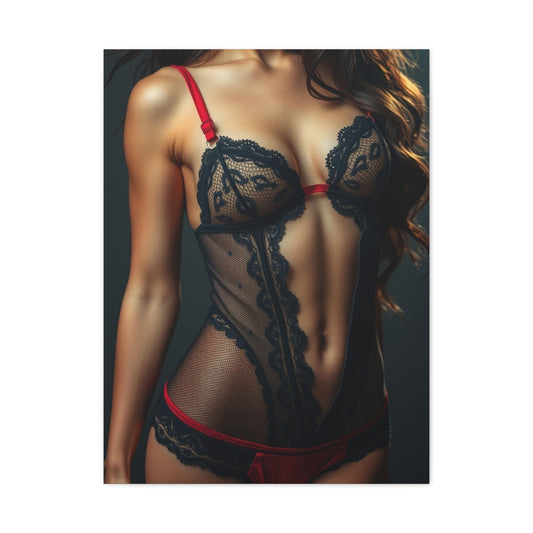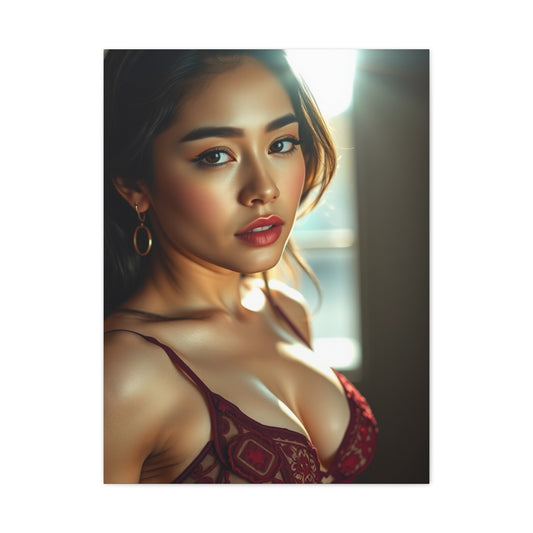-
Elite Lingerie Art Vision Wall Art & Canvas Print
Regular price From $141.23 USDRegular priceUnit price per -
Lingerie Art Supreme Canvas Wall Art & Canvas Print
Regular price From $141.23 USDRegular priceUnit price per -
Lingerie Art Supreme Gallery Wall Art & Canvas Print
Regular price From $141.23 USDRegular priceUnit price per -
Supreme Lingerie Art Collection Wall Art & Canvas Print
Regular price From $141.23 USDRegular priceUnit price per -
Vision Lingerie Art Art Wall Art & Canvas Print
Regular price From $141.23 USDRegular priceUnit price per -
Lingerie Art Luxury Canvas Wall Art & Canvas Print
Regular price From $141.23 USDRegular priceUnit price per -
Collection Lingerie Art Art Wall Art & Canvas Print
Regular price From $141.23 USDRegular priceUnit price per -
Lingerie Art Refined Canvas Wall Art & Canvas Print
Regular price From $141.23 USDRegular priceUnit price per -
Masterpiece Lingerie Art Vision Wall Art & Canvas Print
Regular price From $141.23 USDRegular priceUnit price per
The Art of Intimacy: Exploring Lingerie Wall Art in Contemporary Culture
Lingerie wall art has emerged as a powerful tool for promoting body confidence and self-acceptance in contemporary interior design. This artistic genre celebrates the human form through the delicate representation of intimate apparel, creating visual narratives that encourage viewers to embrace their own bodies. The soft curves, elegant lines, and sophisticated silhouettes depicted in lingerie art serve as gentle reminders that beauty exists in all forms, challenging traditional beauty standards and promoting inclusive ideals.
These artistic pieces often feature diverse body types, skin tones, and ages, reflecting the reality that confidence comes from within rather than conforming to narrow beauty ideals. The strategic placement of lingerie wall art in bedrooms, dressing areas, and personal spaces creates an environment where individuals can connect with their own sensuality and self-worth. The subtle nature of these pieces allows for personal reflection without overwhelming the space, making them perfect for creating intimate sanctuaries where body positivity can flourish.
Artists working in this medium understand the psychological impact of their work, often incorporating affirmations and empowering imagery alongside the lingerie motifs. This combination creates a holistic approach to body confidence that extends beyond mere aesthetic appreciation to genuine self-love and acceptance.
Feminine Power Through Lingerie Art
The intersection of feminine power and lingerie art represents a significant shift in how society views and portrays women's agency and sexuality. Contemporary lingerie wall art moves beyond objectification to celebrate feminine strength, independence, and choice. These artistic representations showcase lingerie not as garments designed solely for others' pleasure, but as symbols of personal empowerment and self-expression.
Modern artists approach this subject matter with nuance and sophistication, creating pieces that honor the complexity of feminine identity. The lingerie becomes a metaphor for the layers of strength that women possess – delicate yet resilient, beautiful yet powerful. Through careful composition and thoughtful symbolism, these artworks communicate messages about autonomy, confidence, and the right to express one's sexuality on one's own terms.
The evolution of lingerie art reflects broader societal changes in gender dynamics and women's rights. As women continue to claim space in traditionally male-dominated fields, lingerie art serves as a visual manifestation of this progress. The pieces often incorporate elements of rebellion, independence, and self-determination, transforming what was once considered purely decorative into powerful statements about feminine agency.
This artistic movement has found particular resonance among younger generations who view sexuality and sensuality as inherent rights rather than privileges to be granted by others. The resulting artworks celebrate this perspective while maintaining artistic integrity and aesthetic appeal.
Cultural Influences in Lingerie Wall Art
Lingerie wall art draws inspiration from diverse cultural traditions, creating rich tapestries of meaning that transcend geographical and temporal boundaries. Different cultures have varying relationships with intimacy, sensuality, and the human form, and these perspectives significantly influence how lingerie is represented in artistic contexts. Eastern influences often emphasize harmony, balance, and the spiritual aspects of feminine energy, while Western traditions might focus more on individual expression and personal freedom.
French culture, with its long history of sophisticated lingerie craftsmanship, has particularly influenced this art form. The emphasis on elegance, refinement, and the art of seduction permeates many contemporary pieces, reflecting centuries of French savoir-faire in intimate apparel. Similarly, Italian influences bring passion, luxury, and an appreciation for fine craftsmanship to the artistic representation of lingerie.
Asian cultures contribute concepts of modesty balanced with hidden beauty, creating artworks that suggest rather than explicitly display. This approach often results in more subtle, contemplative pieces that invite deeper reflection on the nature of beauty and desire. The influence of Japanese aesthetics, particularly the concept of wabi-sabi and the beauty of imperfection, has created a subcategory of lingerie art that celebrates authenticity over perfection.
Contemporary global culture, with its emphasis on diversity and inclusion, has also shaped modern lingerie wall art. Artists increasingly incorporate elements from multiple cultural traditions, creating hybrid pieces that speak to our interconnected world while respecting individual cultural sensitivities.
The History of Lingerie in Visual Art
The representation of intimate apparel in visual art has a rich and complex history that spans centuries, evolving from secretive glimpses in classical paintings to bold contemporary statements. In the Renaissance, artists like Titian and Botticelli included subtle hints of undergarments in their works, often as symbols of virtue or sensuality. These early representations were heavily coded, requiring sophisticated understanding of symbolism to fully appreciate their meaning.
The Victorian era brought both repression and fascination with intimate apparel, reflected in the art of the period. Artists began to explore the tension between public propriety and private desires, using lingerie as a visual metaphor for this cultural contradiction. The emergence of department stores and mass-produced undergarments in the late 19th century coincided with increased artistic interest in these previously hidden aspects of daily life.
The 20th century saw dramatic changes in both lingerie design and its artistic representation. The liberation movements of the 1960s and 1970s brought intimate apparel into the public discourse, and artists began to engage more directly with these themes. Photography became a crucial medium for exploring lingerie in art, with pioneers like Helmut Newton and Guy Bourdin creating iconic images that blurred the lines between fashion, art, and erotica.
Contemporary artists continue to build on this rich tradition while addressing modern concerns about body image, gender identity, and sexual autonomy. Today's lingerie wall art reflects both historical precedents and current social movements, creating a dynamic dialogue between past and present interpretations of intimacy and beauty.
How Lingerie Wall Art Inspires Self-Love
Lingerie wall art serves as a powerful catalyst for self-love and personal acceptance, creating visual affirmations that encourage viewers to embrace their own beauty and worth. The genre's emphasis on elegant forms, sophisticated compositions, and tasteful presentations helps normalize the appreciation of the human body and intimate apparel as subjects worthy of artistic attention. This normalization is crucial in developing healthy relationships with one's own sexuality and physical form.
The psychological impact of surrounding oneself with positive, body-affirming imagery cannot be overstated. Lingerie wall art provides daily reminders that beauty exists in countless forms and that sensuality is a natural and healthy aspect of human experience. These visual cues help counteract negative self-talk and societal pressures that often lead to body dissatisfaction and low self-esteem.
Many individuals report that incorporating lingerie art into their personal spaces has helped them develop more positive relationships with their bodies and sexuality. The art serves as a bridge between private thoughts and external validation, allowing viewers to see themselves reflected in the elegant, confident figures depicted in the artwork. This reflection can be particularly powerful for those who have struggled with body image issues or who are working to reclaim their relationship with their own sensuality.
The therapeutic potential of lingerie wall art extends beyond individual self-reflection to couples' relationships, where shared appreciation of these artistic pieces can facilitate open discussions about desire, attraction, and mutual acceptance. This dialogue often leads to stronger, more honest relationships built on genuine appreciation rather than unrealistic expectations.
Lingerie Art in Contemporary Galleries
The inclusion of lingerie art in contemporary galleries represents a significant milestone in the legitimization of this artistic genre. Major museums and galleries worldwide have begun to recognize the cultural significance and artistic merit of works that explore themes of intimacy, sexuality, and the human form through the lens of intimate apparel. This institutional validation has elevated the conversation around lingerie art from purely commercial or decorative contexts to serious artistic discourse.
Contemporary galleries provide unique opportunities for artists to present lingerie-themed works in thoughtfully curated contexts that enhance their meaning and impact. The gallery setting allows for more complex installations, multimedia presentations, and conceptual frameworks that might not be possible in commercial or residential settings. This environment encourages deeper engagement with the themes and messages embedded in the artwork.
The demographic diversity of gallery visitors has also contributed to broader acceptance and appreciation of lingerie art. Exposure to these works in neutral, educational settings helps normalize the subject matter and encourages more open discussions about the themes they explore. This exposure is particularly valuable for younger audiences who are forming their own attitudes toward sexuality, body image, and artistic expression.
Critics and curators have begun to develop sophisticated frameworks for analyzing and contextualizing lingerie art within broader art historical and cultural contexts. This scholarly attention has led to more nuanced understanding of the genre's significance and its potential for social commentary and artistic innovation. The resulting critical discourse has elevated the entire field and attracted more serious artists to explore these themes.
Sensuality Meets Minimalism in Lingerie Art
The intersection of sensuality and minimalism in lingerie wall art creates a sophisticated aesthetic that celebrates restraint and suggestion rather than explicit display. This approach reflects contemporary design principles that value clean lines, negative space, and subtle sophistication. Minimalist lingerie art often features simple silhouettes, muted color palettes, and compositions that emphasize form and texture over decorative details.
The minimalist approach to lingerie art serves multiple aesthetic and psychological functions. By stripping away extraneous elements, these works focus attention on essential forms and emotions, creating more powerful and lasting impressions. The restraint inherent in minimalist design also makes these pieces more versatile in various interior settings, allowing them to complement rather than compete with existing decor elements.
This style particularly appeals to contemporary audiences who appreciate sophistication and subtlety in their artistic choices. The minimalist aesthetic allows viewers to project their own interpretations and emotions onto the work, creating more personal and meaningful connections. This participatory aspect of minimalist lingerie art enhances its psychological impact and therapeutic potential.
The technical challenges of creating effective minimalist lingerie art require artists to master the art of suggestion and implication. Every line, shadow, and negative space must contribute meaningfully to the overall composition. This discipline often results in works of exceptional quality and impact that demonstrate the power of restraint in artistic expression.
Lingerie Wall Art and Romantic Storytelling
Lingerie wall art has evolved into a sophisticated medium for romantic storytelling, creating visual narratives that explore themes of love, desire, and intimate connection. These artistic pieces often suggest stories rather than explicitly depicting them, allowing viewers to imagine the circumstances, emotions, and relationships that surround the lingerie-clad figures. This narrative approach transforms static images into dynamic storytelling devices that engage the imagination and emotions.
The storytelling potential of lingerie art lies in its ability to capture moments of vulnerability, anticipation, and intimate connection. Artists working in this medium understand the power of suggestion and use visual cues – lighting, composition, body language, and environmental details – to imply narratives that resonate with universal experiences of love and desire. These stories often transcend cultural and linguistic barriers, speaking directly to fundamental human emotions and experiences.
Contemporary romantic storytelling through lingerie art has become increasingly sophisticated and inclusive, featuring diverse relationships and challenging traditional romantic narratives. Modern pieces might explore themes of self-love, same-sex relationships, or non-traditional romantic structures, reflecting the evolving understanding of love and intimacy in contemporary society. This inclusivity has broadened the appeal and relevance of lingerie art as a storytelling medium.
The integration of lingerie art into romantic spaces – bedrooms, intimate dining areas, or private retreats – enhances its storytelling power by creating immersive environments where the narratives suggested by the artwork can inspire real-life romantic experiences. This blending of art and life demonstrates the medium's practical as well as aesthetic value.
The Psychology Behind Lingerie in Art
The psychological dimensions of lingerie in art reveal complex relationships between clothing, identity, sexuality, and power that extend far beyond surface aesthetics. Psychological research suggests that intimate apparel holds unique significance in human consciousness, representing the boundary between public and private selves, between the social persona and the intimate individual. When translated into artistic form, these psychological associations create layered meanings that can profoundly impact viewers.
The concept of "enclothed cognition" – the psychological effect of wearing certain clothing – extends to viewing representations of clothing in art. Lingerie art can evoke feelings of confidence, sensuality, and empowerment in viewers, even when they are not wearing the depicted garments themselves. This vicarious psychological effect demonstrates the power of visual representation in shaping self-perception and emotional states.
From a therapeutic perspective, lingerie art can serve as a tool for addressing body image issues, sexual trauma recovery, and relationship difficulties. The non-threatening nature of artistic representation allows individuals to engage with themes of sexuality and intimacy in controlled, safe environments. This engagement can facilitate healing and growth in ways that more direct approaches might not achieve.
The psychological impact of lingerie art also varies significantly based on cultural background, personal history, and individual psychology. Understanding these variations is crucial for artists, therapists, and interior designers who work with this medium. The most effective pieces consider these psychological dimensions during their creation, resulting in works that resonate deeply with their intended audiences while respecting individual boundaries and sensitivities.
Exploring Texture in Lingerie Wall Art
Texture plays a crucial role in the visual and emotional impact of lingerie wall art, creating tactile experiences that engage viewers on multiple sensory levels. The representation of different fabric textures – silk, lace, satin, cotton, and synthetic materials – requires sophisticated artistic techniques that can convey the unique qualities of each material. These textural elements contribute significantly to the overall aesthetic and emotional resonance of the artwork.
Artists working with lingerie themes often develop specialized techniques for representing the complex textures found in intimate apparel. Lace requires particular attention to pattern, transparency, and shadow play, while silk demands careful consideration of light reflection and fluid draping. These technical challenges have pushed artists to develop innovative approaches that enhance the realism and emotional impact of their work.
The psychological effect of textural representation in lingerie art cannot be understated. Viewers often experience tactile memory responses when viewing well-executed textural elements, creating more immersive and emotionally engaging experiences. This sensory engagement enhances the artwork's ability to evoke feelings of luxury, comfort, sensuality, or elegance, depending on the artist's intentions.
Contemporary mixed-media approaches to lingerie art have expanded the possibilities for textural exploration. Artists now incorporate actual fabric elements, raised surfaces, and interactive components that allow viewers to experience textures physically as well as visually. These innovations have created new subcategories within the genre and opened possibilities for more inclusive, multi-sensory artistic experiences.
Lingerie Art as Empowerment
The transformation of lingerie art into a vehicle for personal and collective empowerment represents one of the most significant developments in contemporary feminist artistic expression. This evolution challenges traditional power dynamics associated with the male gaze and reclaims agency over how feminine sexuality and intimacy are portrayed and consumed. Modern lingerie art prioritizes the subject's autonomy and voice over external objectification.
Empowerment through lingerie art manifests in various forms, from celebrating body diversity and challenging beauty standards to asserting sexual agency and rejecting shame-based attitudes toward sexuality. Artists working in this tradition often collaborate with their subjects, ensuring that the resulting works reflect authentic experiences rather than imposed fantasies. This collaborative approach has revolutionized the genre and attracted artists committed to social justice and equality.
The commercial success of empowerment-focused lingerie art has demonstrated market demand for authentic, respectful representations of sexuality and intimacy. This economic validation has enabled more artists to pursue this approach while encouraging galleries, collectors, and institutions to take these works seriously. The resulting cultural shift has benefits that extend far beyond the art world.
Educational institutions have begun incorporating empowerment-focused lingerie art into curricula addressing gender studies, psychology, and artistic expression. This academic attention has generated scholarly research that further validates the genre's significance and potential for positive social impact. The intersection of academic study and artistic practice continues to drive innovation and sophistication in this field.
Subtle Eroticism in Modern Lingerie Art
Modern lingerie art has mastered the art of subtle eroticism, creating works that acknowledge and celebrate human sexuality while maintaining sophistication and artistic integrity. This approach recognizes that the most powerful erotic art often relies on suggestion, anticipation, and emotional connection rather than explicit display. The resulting works appeal to viewers' intelligence and imagination while respecting boundaries and sensitivities.
The development of subtle erotic approaches in lingerie art reflects broader cultural conversations about healthy sexuality and consent. Contemporary artists understand that true eroticism emerges from mutual respect, emotional connection, and authentic desire rather than power imbalances or objectification. This understanding has led to more thoughtful, nuanced works that celebrate sexuality as a positive force in human experience.
Technical mastery plays a crucial role in achieving effective subtle eroticism in lingerie art. Artists must understand lighting, composition, color theory, and human psychology to create works that evoke desired emotional responses without crossing into inappropriate or offensive territory. This technical sophistication has elevated the entire genre and attracted serious artists and collectors.
The market for subtly erotic lingerie art has expanded significantly as collectors and institutions recognize the artistic merit and cultural significance of these works. This commercial success has enabled artists to pursue more ambitious projects while maintaining artistic integrity. The resulting cycle of quality and success continues to drive innovation and sophistication in the field.
Lingerie Wall Art for Wellness Spaces
The integration of lingerie wall art into wellness spaces represents an innovative approach to holistic healing that addresses psychological, emotional, and spiritual aspects of well-being. Wellness practitioners have begun to recognize the therapeutic potential of carefully selected lingerie art in creating environments that promote self-acceptance, body positivity, and healthy sexuality. These applications extend beyond traditional therapy settings to include spas, yoga studios, and meditation centers.
The selection process for wellness-appropriate lingerie art requires careful consideration of the intended therapeutic outcomes and the diverse needs of clients. Pieces chosen for these environments typically emphasize empowerment, self-love, and holistic well-being rather than purely aesthetic concerns. The artwork serves as visual affirmations that support the healing process and reinforce positive messages about body image and self-worth.
Research in environmental psychology supports the use of appropriate artwork in therapeutic settings, demonstrating measurable impacts on patient outcomes and treatment effectiveness. Lingerie art's unique ability to address intimate aspects of psychological well-being makes it particularly valuable in certain therapeutic contexts. The key lies in thoughtful selection and placement that respects individual boundaries while promoting healing.
Professional training programs have emerged to help wellness practitioners effectively incorporate lingerie art into their therapeutic approaches. These programs address selection criteria, placement strategies, and techniques for facilitating client discussions about the artwork's meaning and impact. This educational foundation ensures that the integration of lingerie art enhances rather than complicates the therapeutic process.
Artistic Nude vs. Lingerie Wall Art
The distinction between artistic nude and lingerie wall art involves complex considerations of intention, context, cultural sensitivity, and artistic purpose. While both genres explore themes related to the human form and sexuality, they approach these subjects through different aesthetic and conceptual frameworks. Understanding these differences is crucial for artists, collectors, and viewers who engage with either or both genres.
Artistic nude traditionally focuses on the unclothed human form as a subject worthy of artistic exploration, often emphasizing universal themes of beauty, vulnerability, and humanity. Lingerie art, by contrast, explores the relationship between clothing and identity, the psychology of intimate apparel, and the cultural meanings embedded in these garments. The presence of lingerie in the artwork adds layers of meaning related to privacy, seduction, and personal choice that are absent from nude studies.
The cultural acceptance and market reception of these two genres often differs significantly depending on geographic location, cultural context, and institutional setting. Lingerie art sometimes faces greater resistance due to its commercial associations and perceived connection to fashion or advertising, while artistic nude may be more readily accepted within traditional fine art contexts. These perceptions continue to evolve as both genres gain recognition and critical attention.
Contemporary artists increasingly blur the boundaries between these categories, creating hybrid works that incorporate elements of both traditions. This artistic innovation reflects broader cultural conversations about sexuality, identity, and artistic freedom while challenging traditional genre distinctions and expanding possibilities for creative expression.
Lingerie Art in Fashion Illustration
The intersection of lingerie art and fashion illustration has created a dynamic subcategory that bridges commercial design and fine art. Fashion illustrators working with lingerie themes must balance artistic expression with commercial requirements, creating works that function both as marketing tools and standalone artistic pieces. This dual purpose has driven innovation in technique, style, and conceptual approach.
Contemporary fashion illustration featuring lingerie has evolved far beyond simple product representation to encompass complex narratives about identity, empowerment, and cultural trends. Illustrators use their medium to comment on fashion industry practices, beauty standards, and consumer culture while creating visually compelling works that advance the conversation around these themes.
The digital revolution has transformed fashion illustration, enabling artists to experiment with new techniques, color palettes, and compositional approaches that were previously impossible or impractical. These technological advances have particularly benefited lingerie illustration, allowing for more sophisticated representation of textures, lighting effects, and atmospheric qualities that enhance the emotional impact of the work.
Educational programs in fashion illustration increasingly include coursework on lingerie art, recognizing its commercial importance and artistic potential. Students learn to navigate the complex requirements of this specialized field while developing their own artistic voices and technical skills. This educational foundation ensures continued innovation and quality in the field.
Abstract Lingerie Forms in Wall Art
Abstract approaches to lingerie art have opened new possibilities for artistic expression while maintaining connection to the genre's core themes and concerns. Abstract lingerie art distills the essential elements of intimate apparel – curves, textures, shadows, and suggestions of the human form – into non-representational compositions that evoke emotional and psychological responses without literal depiction.
The development of abstract lingerie art reflects broader trends in contemporary art toward conceptual and non-representational approaches. Artists working in this medium often find that abstraction allows for more universal and timeless expressions of themes related to intimacy, sensuality, and human connection. The resulting works can transcend cultural and temporal boundaries while maintaining emotional resonance.
Technical approaches to abstract lingerie art vary widely, from gestural expressionist paintings that capture the energy and movement of fabric to geometric compositions that explore the architectural aspects of garment construction. Color theory plays a particularly important role in abstract lingerie art, as artists rely heavily on color relationships to convey mood, emotion, and conceptual content.
The market reception of abstract lingerie art has been generally positive, with collectors and institutions appreciating the genre's ability to address sensitive themes through sophisticated artistic approaches. This acceptance has encouraged more experimental work and attracted artists from other abstract traditions to explore lingerie-related themes in their practice.
Celebrating Diversity with Lingerie Art
Contemporary lingerie art has become an important vehicle for celebrating human diversity in all its forms, challenging traditional beauty standards and promoting inclusive representations of bodies, identities, and experiences. This commitment to diversity reflects broader social movements toward equality and representation while advancing the artistic and cultural significance of the genre.
Artists committed to diversity in lingerie art actively seek to represent different body types, ages, ethnicities, abilities, and gender expressions in their work. This inclusive approach requires sensitivity, research, and often collaboration with community members to ensure authentic and respectful representation. The resulting works contribute to broader cultural conversations about beauty, acceptance, and human dignity.
The impact of diverse representation in lingerie art extends beyond the art world to influence fashion, advertising, and popular culture. By demonstrating the beauty and dignity of all human forms, these artistic works challenge discriminatory practices and encourage more inclusive approaches across industries. This cultural influence represents one of the genre's most significant contributions to social progress.
Educational initiatives have emerged to support artists interested in creating more diverse lingerie art, providing resources, training, and community connections that facilitate authentic representation. These programs address both technical and cultural aspects of inclusive art-making while building networks of support among artists committed to diversity and social justice.
Lingerie Wall Art and Feminist Movements
The relationship between lingerie wall art and feminist movements represents a complex and evolving dialogue about agency, representation, and the politics of sexuality. Contemporary feminist artists have reclaimed lingerie as a subject matter, transforming it from a symbol of objectification into a vehicle for empowerment, self-determination, and political expression.
Historical feminist critiques of lingerie focused on its role in objectifying women and reinforcing patriarchal beauty standards. However, contemporary feminists have developed more nuanced approaches that recognize the potential for lingerie to represent choice, agency, and personal empowerment when presented in appropriate contexts. This evolution reflects broader changes in feminist theory and practice.
Feminist lingerie artists often employ strategies of reclamation and subversion, using traditional imagery in new contexts that challenge patriarchal assumptions and power structures. These approaches might involve depicting older women in lingerie, celebrating diverse body types, or presenting intimate apparel in contexts that emphasize strength and independence rather than vulnerability or availability.
The institutional art world's growing acceptance of feminist lingerie art has provided platforms for important conversations about gender, power, and representation. Museums and galleries have begun to present exhibitions that explore these themes, contributing to scholarly discourse and public education about the complex relationships between feminism and artistic representation of sexuality.
Vintage Lingerie Ads as Wall Art
The transformation of vintage lingerie advertisements into collectible wall art represents a fascinating intersection of commercial history, feminist critique, and aesthetic appreciation. These historical artifacts provide windows into past attitudes about sexuality, gender roles, and consumer culture while serving as compelling visual documents of changing social norms and artistic styles.
Collectors and artists have discovered significant artistic merit in vintage lingerie advertising, particularly pieces created during the golden age of American advertising from the 1920s through the 1960s. The sophisticated illustration techniques, typography, and compositional approaches used in these commercial pieces often rival contemporary fine art in their technical excellence and visual impact.
The feminist recontextualization of vintage lingerie ads has created new frameworks for understanding and appreciating these historical works. Rather than simply celebrating their aesthetic qualities, contemporary viewers and critics examine these pieces as documents of patriarchal culture while acknowledging their artistic merits and historical significance. This critical approach has enhanced rather than diminished their cultural value.
The market for vintage lingerie advertising art has grown substantially as collectors recognize both the historical significance and aesthetic appeal of these pieces. This commercial success has supported preservation efforts and scholarly research while making these cultural artifacts accessible to broader audiences through museums, galleries, and educational institutions.
Lingerie Art in Pop Surrealism
The incorporation of lingerie themes into pop surrealism has created some of the most visually striking and conceptually complex works in contemporary art. Pop surrealist artists use lingerie as a starting point for explorations of desire, identity, consumer culture, and the unconscious mind, creating dreamlike compositions that challenge conventional interpretations of intimate apparel and sexuality.
Pop surrealism's emphasis on technical excellence and hyperrealistic rendering techniques has produced lingerie art of exceptional visual quality and emotional impact. Artists working in this tradition often spend months perfecting the representation of fabric textures, lighting effects, and atmospheric qualities that enhance the surreal and fantastical elements of their compositions.
The conceptual frameworks employed by pop surrealist lingerie artists often draw from psychoanalytic theory, dream imagery, and pop culture references to create multi-layered works that reward careful study and interpretation. These pieces function both as visually compelling artworks and as complex cultural commentaries that address contemporary anxieties and desires.
The commercial success of pop surrealist lingerie art has demonstrated significant market demand for technically excellent, conceptually sophisticated works that address themes of sexuality and identity. This success has attracted established artists from other movements while encouraging emerging artists to develop skills in both technical execution and conceptual development.
The Role of Lace in Lingerie Wall Art
Lace occupies a central position in lingerie wall art, serving both aesthetic and symbolic functions that enhance the emotional and visual impact of these artistic works. The intricate patterns, delicate textures, and historical associations of lace create rich opportunities for artistic exploration while connecting contemporary works to centuries of textile tradition and cultural meaning.
The technical challenges of representing lace in various artistic media have pushed artists to develop sophisticated approaches to pattern, transparency, and light interaction. Whether working in paint, pencil, photography, or digital media, artists must master complex techniques to effectively convey the unique visual qualities that make lace so compelling as an artistic subject.
Symbolically, lace in lingerie art often represents femininity, tradition, craftsmanship, and the intersection of public and private spheres. These symbolic associations allow artists to embed multiple layers of meaning in their works while creating visually beautiful pieces that appeal to diverse audiences. The cultural resonance of lace imagery enhances the communicative power of lingerie art.
Contemporary artists have begun to experiment with deconstructed and reimagined approaches to lace representation, challenging traditional associations while maintaining connection to the material's inherent beauty and cultural significance. These innovative approaches have expanded the possibilities for lace-based lingerie art while attracting new audiences to the genre.
How Lighting Affects Lingerie Wall Art
Lighting plays a crucial role in the presentation and impact of lingerie wall art, influencing everything from color perception and texture visibility to emotional atmosphere and viewer engagement. Understanding the interaction between light and lingerie-themed artwork is essential for artists, collectors, and anyone involved in displaying these pieces effectively.
Natural lighting conditions change throughout the day, creating dynamic viewing experiences that can dramatically alter the appearance and mood of lingerie wall art. Morning light might emphasize certain colors and textures, while evening light creates entirely different emotional atmospheres. Artists and curators must consider these variations when creating and displaying works intended for natural lighting conditions.
Artificial lighting systems offer greater control over viewing conditions but require careful selection and positioning to achieve desired effects. LED systems have become particularly popular for displaying lingerie art due to their ability to render colors accurately while producing minimal heat that could damage delicate artworks. The direction, intensity, and color temperature of artificial lighting all significantly impact the viewer's experience.
The psychological effects of lighting on viewer response to lingerie art cannot be overlooked. Soft, warm lighting typically creates intimate, romantic atmospheres that enhance the emotional impact of these works, while cooler, brighter lighting might emphasize artistic and technical qualities. Understanding these psychological effects allows for more intentional and effective presentation strategies.
Lingerie Wall Art for Boutique Hotels
The hospitality industry has discovered the unique appeal of carefully selected lingerie wall art in creating sophisticated, intimate atmospheres that distinguish boutique hotels from generic chain properties. The integration of these artistic pieces requires careful consideration of guest demographics, cultural sensitivities, and the overall brand identity of the establishment.
Boutique hotels benefit from lingerie wall art's ability to create memorable, distinctive environments that encourage social media sharing and word-of-mouth promotion. The sophisticated aesthetic of quality lingerie art appeals to design-conscious travelers while creating intimate spaces that enhance the overall guest experience. This marketing value has made lingerie art an increasingly popular choice for hotel designers.
The selection process for hotel lingerie art involves balancing artistic quality with broad appeal and cultural appropriateness. Hotels must consider the diverse backgrounds and sensitivities of their international clientele while maintaining the intimate, sophisticated atmosphere that lingerie art can provide. This balance requires expertise in both art curation and hospitality management.
Professional consulting services have emerged to help hospitality businesses effectively incorporate lingerie art into their design schemes. These specialists understand both the artistic and commercial aspects of selection and placement while ensuring compliance with local regulations and cultural norms. This professional support has facilitated broader adoption of lingerie art in hospitality settings.
Mixed Media Approaches to Lingerie Art
Contemporary artists have embraced mixed media approaches to lingerie art, combining traditional techniques with innovative materials and methods to create works of exceptional complexity and visual impact. These experimental approaches have expanded the boundaries of the genre while attracting artists from diverse backgrounds and training.
Common mixed media combinations in lingerie art include fabric elements integrated with painted or drawn surfaces, photography combined with textile applications, and digital manipulations merged with traditional printmaking techniques. These hybrid approaches allow artists to address both the visual and tactile qualities of intimate apparel while creating unique aesthetic experiences.
The conceptual possibilities opened by mixed media approaches have enabled artists to address complex themes related to identity, consumer culture, and the relationship between virtual and physical reality. These works often comment on contemporary life's increasing digitization while maintaining connection to the physical, sensual aspects of lingerie and intimate experience.
Technical training for mixed media lingerie art requires interdisciplinary knowledge spanning traditional fine arts, textile arts, digital media, and often engineering or crafts techniques. Educational institutions have begun developing specialized programs that address these diverse skill requirements while fostering conceptual sophistication and artistic vision.
Bold Colors in Lingerie Wall Art
The use of bold, vibrant colors in lingerie wall art has created a dynamic subcategory that challenges traditional associations of intimate apparel with soft pastels and muted tones. Contemporary artists employ intense color palettes to create powerful emotional impacts while commenting on topics ranging from female empowerment to consumer culture and artistic tradition.
Bold color choices in lingerie art often serve symbolic and psychological functions beyond their immediate visual impact. Bright reds might represent passion and power, while electric blues could suggest freedom and unconventionality. Artists working with bold palettes typically develop sophisticated color theories that enhance the conceptual content of their works while creating visually striking compositions.
The technical challenges of working with intense colors require advanced understanding of color interaction, composition, and viewer psychology. Artists must balance the attention-grabbing power of bold colors with the need for aesthetic harmony and emotional appropriateness. This balance requires both technical skill and sophisticated artistic judgment.
The market reception of bold-colored lingerie art has been generally positive, particularly among younger collectors and those seeking statement pieces for contemporary interior designs. This demographic shift has influenced the broader lingerie art market while encouraging more experimental approaches to color and composition throughout the genre.
Lingerie Wall Art for Creative Studios
Creative professionals have discovered that carefully selected lingerie wall art can enhance the atmosphere and productivity of their workspaces while reflecting their artistic sensibilities and professional identities. The integration of these pieces into creative studios requires consideration of both aesthetic and functional concerns, including lighting, workflow, and client interactions.
The inspirational potential of lingerie wall art in creative environments stems from its ability to address themes of beauty, form, texture, and human expression that are central to many creative disciplines. Fashion designers, photographers, and artists often find that surrounding themselves with quality lingerie art enhances their own creative thinking and artistic development.
The selection process for studio lingerie art typically emphasizes pieces that demonstrate technical excellence and conceptual sophistication rather than purely decorative works. Creative professionals often choose pieces that challenge conventions or explore innovative approaches, seeking artworks that stimulate their own creative thinking and professional growth.
The networking potential of distinctive lingerie art in creative studios should not be overlooked. These pieces often serve as conversation starters with clients, collaborators, and fellow professionals while demonstrating the studio owner's artistic awareness and sophisticated taste. This social function can contribute significantly to professional relationship building and business development.
Using Lingerie Art to Break Taboos
Contemporary lingerie artists have positioned their work at the forefront of efforts to challenge and dismantle harmful taboos surrounding sexuality, body image, and intimate expression. By presenting these subjects through sophisticated artistic frameworks, these artists create safe spaces for important conversations while advancing broader social progress toward healthier attitudes about human sexuality and physical beauty.
The strategy of using high-quality art to address taboo subjects has historical precedents in movements that challenged racial discrimination, gender inequality, and other forms of social injustice. Lingerie artists employ similar approaches, leveraging the respect typically accorded to artistic expression to introduce and normalize previously forbidden topics.
Educational institutions have begun to recognize the value of lingerie art in curricula addressing psychology, sociology, gender studies, and human sexuality. These academic applications demonstrate the genre's potential for promoting healthy attitudes and open dialogue about topics that were previously relegated to whispered conversations or complete avoidance.
The therapeutic applications of taboo-challenging lingerie art extend to clinical settings where individuals work to overcome shame, trauma, or dysfunctional attitudes related to sexuality and body image. The artistic context provides emotional distance and safety that can facilitate healing and growth in ways that more direct approaches might not achieve.
Conclusion
Lingerie wall art occupies a unique and compelling space within contemporary visual culture, blending themes of sensuality, empowerment, fashion, and artistic expression. Once confined to the private or taboo, representations of lingerie have evolved into legitimate subjects of fine art and interior design, challenging outdated norms and inviting deeper reflection on how we view the human form, femininity, and personal identity.
At its core, lingerie wall art is not merely about the garments themselves but about what they represent—confidence, vulnerability, seduction, and self-celebration. Through photography, illustration, painting, and digital media, artists are increasingly using lingerie as a powerful symbol of intimacy, not just between partners but also with oneself. In this way, lingerie-themed art becomes more than decoration—it becomes a statement of autonomy, self-love, and modern aesthetics.
This shift reflects broader cultural changes. As society grows more accepting of body diversity, personal expression, and non-traditional beauty, lingerie wall art plays a role in deconstructing stigmas. It empowers viewers to see beauty in subtlety, detail, and form, and to embrace the idea that sensuality can be artistic rather than merely provocative. For many, it provides an avenue to explore and celebrate identity through the lens of style, without shame or objectification.
From fashion-forward editorials turned into canvas prints to minimalist line art featuring elegant undergarments, lingerie wall art complements a wide range of interior styles—from boudoir-inspired bedrooms to high-concept galleries and modern living spaces. It offers both a visual focal point and a conversation starter, encouraging viewers to consider the relationship between fashion, emotion, and personal narrative.
Moreover, this genre invites a redefinition of intimacy in visual art. It suggests that intimacy does not have to be explicit to be powerful, nor private to be appreciated. By placing lingerie art in public or semi-public spaces, it challenges our understanding of what is considered "appropriate" art, asking us to reevaluate where intimacy belongs in our cultural and aesthetic conversations.
In embracing lingerie wall art, collectors and casual admirers alike contribute to an evolving dialogue—one that acknowledges vulnerability as strength, and beauty as something deeply personal. This art form celebrates the elegance of detail, the allure of self-expression, and the quiet confidence that can come from simply being seen, even in our most delicate moments.
Ultimately, lingerie wall art is a testament to the modern celebration of the human form and the intimate narratives we carry. It bridges fashion and fine art, sensuality and sophistication, creating space for nuance, appreciation, and bold visual storytelling in contemporary culture.

